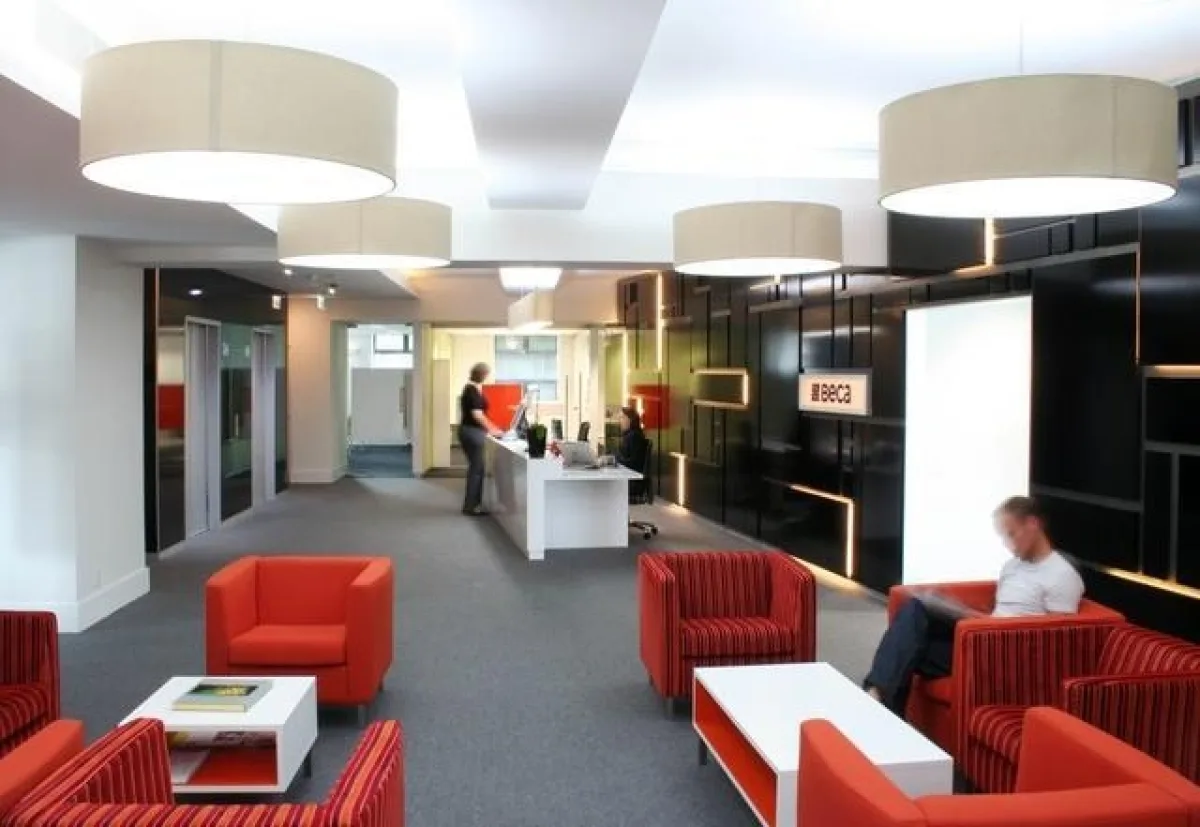Looking at the Inside, from the Outside
23 Apr 2013
Shauna Herminghouse, architect at Studio of Pacific Architecture in Wellington, discusses her specialisation in interiors from assumptions of being a colour consultant to the professional opportunities in this niche.
The noticeable lack of mud on my site boots gives away a bit of what I do as an architect. About 8 years ago, I transitioned from architecture into interiors. I harbour a bit of self-consciousness that people make presumptions about me when they see my relatively clean site boots. While I hope I'm judged by my abilities and actions, and not my appearance or even my gender, I often find myself considering the preconceptions involved in defining myself as either an architect, or more specifically as an interior architect, or more generically, as an interior designer.
My pathway through architecture has led me from designing civic buildings to residential buildings, then back to civic again, and finally, into the interior. I should really say into the interior at last. Before deciding in my mid-teens to pursue a career in architecture, I initially had dreams of being an interior designer. That aspiration may have been partly fueled by my sizeable and ever-expanding collection of paint chips harvested as a source of creative amusement on the many visits to the hardware store with my dad. He teases that I grew up with a sawdust pit instead of the sandpits that most other kids had. I had fascinating construction sites to explore and learn on, in every house in which we lived. I have heard theories that many women end up in the construction industry as the result of their fathers’ influence. I am one of those statistics, which I see as a favourable result. After spending adolescent years experimenting with interior decoration, I was urged to consider architecture instead, persuaded by the argument that I could potentially have a wider range of projects and clients. I had naively bought into to the narrow view that interiors were a matter of domestic decoration applied through finishes, furniture and of course accent pillows, designed for wealthy clients.
Ironically, I now find myself trying to shrug off that stereotype which I previously so ignorantly subscribed to. Within moments of telling people that I work in interiors, the conversation sometimes quickly turns to them asking me for advice on paint colours inside their house. While I'm flattered by being asked for my opinion, I feel compelled to explain to people that I'm an architect that works in interiors, which is perhaps my attempt to elucidate that there is far more to my skills and the scope of the design of interiors than picking out colours. I thrive on the creative, theoretical, and technical nature of the large-scale commercial interior work I do, and integrate the architectural training that led to my present work. There are some clear boundaries of interior projects that appealed to me as I considered the transition: no resource consents, no external weather tightness issues, and projects could be finished within a year - it was eminently appealing. Even within the architecture industry, some of my colleagues don’t seem to fully comprehend what is entailed in interior work until they get involved in an interiors project, as even experienced architects are often surprised it involves far more than colourboards and furniture.
I often feel compelled to promote the legitimacy of interior architecture or interior design - take your pick on how you like to label the profession - as valid aspects of architecture in their own right, not just subservient services offering superficial decorations applied to an architect’s building. The recent proliferation of interior design shows on television doesn’t seem to be helping the case, though. But, if I step away for a moment from my reactive dubiousness about the qualifications of the interior designers or decorators on the shows, in the spirit of collegiality, shouldn’t I be proud to see the glamorous women that are endorsed as experts on these shows being successful in their own right, and promoting women's contributions to the design industry? The increasing ambition of women to gain acceptance and acknowledgement of their value and role in work environments appears paralleled by the evolving identity and expertise of the interiors profession, and I find it reasonably significant and quite appealing that there are a lot of women involved in the field.
It is encouraging to see a proportionally high representation of women in interiors, seemingly many more than in architecture. It is still noticeable that while there are a few outstanding women in high-level leadership roles, there still aren't that many at the top, particularly in large firms in New Zealand. I'll readily admit that my peer network being made up of architecture firms rather than practices doing solely interior design biases my view. As women are striving for more recognition and advancement in architecture, it's inspiring to see the New Zealand Interior Designer website, where every interior design practice featured is comprised of women, reflective of the commonly held perception (and I underline that this is just a generalised view) that interior design is a field that is well suited to women's particular sensitivities and abilities, in which we can flourish. It is encouraging to see such success of women in interior design, and I look for the opportunities where that extends through the particular channel I have placed myself in, via architectural practice.
There is an innate feminine aspect to interiors, and there are plenty of opportunities to exercise and express that. It may be that clients and colleagues seem to trust our intuition and aesthetic sense in making judgment calls on interiors, as well as interior projects demanding a high degree of collaboration and consultative communication, in which case a woman's approach could be seen to be of reasonable advantage. But the further one progresses from design schools, to design showrooms and designer's offices, to the wider project team, to the contractors and tradespeople on construction sites, the visibility of women noticeably decreases along the way. As a profession with such apparent strength of female presence on the surface, one has to wonder why there aren't more women at the top, particularly in architecture firms with interior teams. I'm hopeful that change will come, and that the increased visibility of women as leaders in interior design mirrors the promise of growth and recognition we are working to realise in architecture and beyond.












